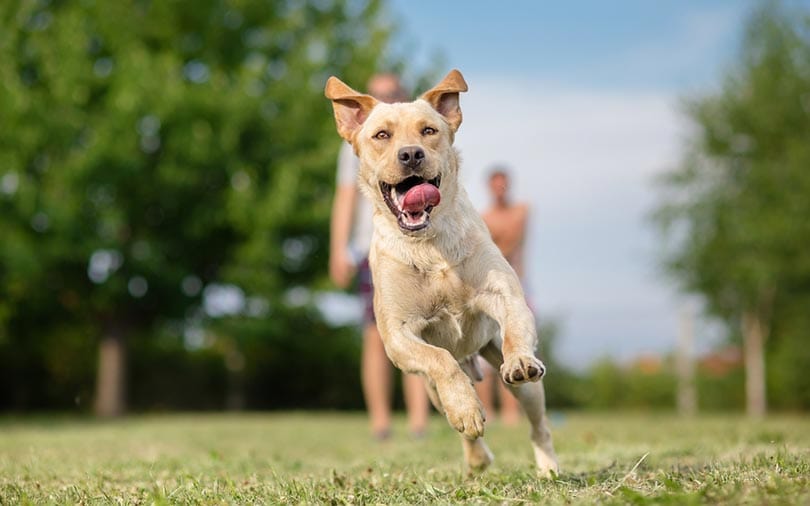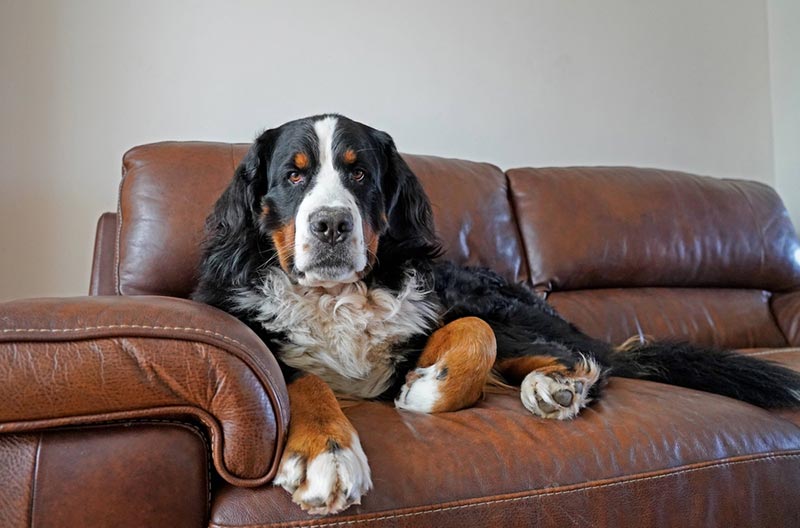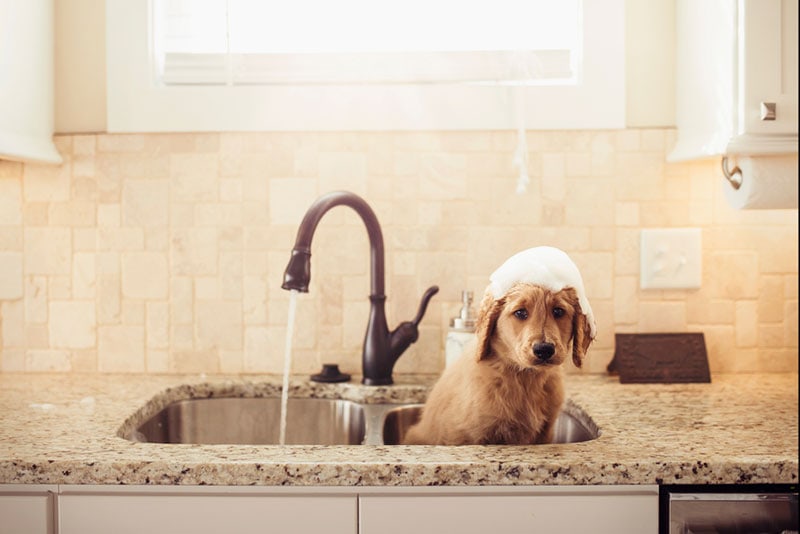Yellow Labradoodle: Facts, History & Origin (With Pictures)
Updated on
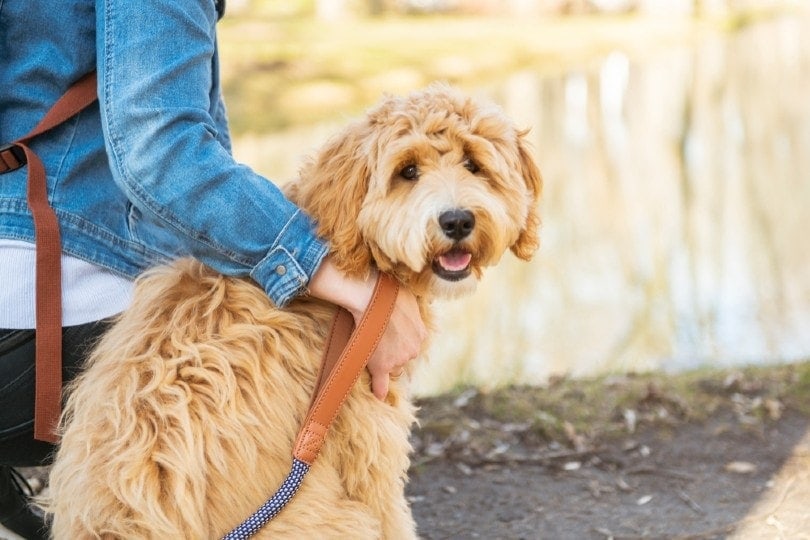
Although Labradoodles were first starting to be produced in the 1970s and 1980s, they suddenly began booming in popularity in the United States just within the last couple of decades. These dogs are highly prized for their typically social and laid-back temperament, intelligence, and low shedding.
Labradoodles are produced from a cross between a Labrador Retriever and a Poodle, which can be any size, so they come in a range of sizes. They also come in multiple colors, but one of the most common colors you’ll see in Labradoodles is yellow.
The Earliest Records of the Yellow Labradoodle in History
In the 1970s, a man named Wally Conron, on behalf of the Royal Guide Dog Association of Australia, set out to produce a dog that made an ideal service dog, like a Labrador Retriever, while producing minimal shed, like a Poodle1. This led to the creation of the Labradoodle. Interestingly, Labradoodles in Australia are also allowed to have Cocker Spaniel in their breeding lines.
Once the chosen breeds were selected and breeding programs began, breeders began to work to refine the dogs in an attempt to create a standard breed with a reliable temperament, coat type, and work ethic. Labradoodles tend to come in four colors: black, yellow, chocolate, and caramel. The first three colors are standard colors within the Labrador Retriever breed, while caramel coloration comes from crossing the genes of the parents, although some people consider caramel to actually be a shade of yellow.
The yellow Labradoodle is one of the most common coat colors you’ll see this breed in. Typically, this color is from the combination of a yellow Lab parent and an apricot Poodle parent. Yellow Labradoodles can come in a broad range of yellow colors, from cream to gold.
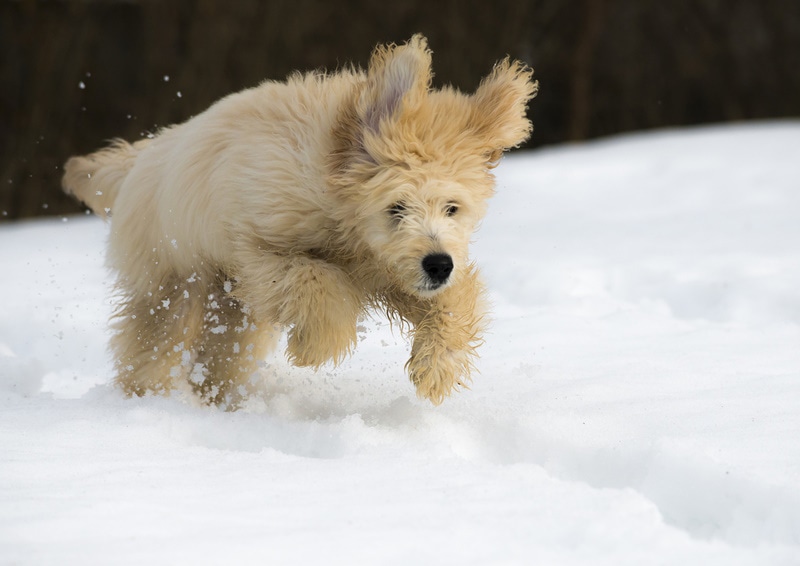
How the Yellow Labradoodle Gained Popularity
Yellow Labradoodles actually fall slightly behind the black Labradoodle in popularity and color frequency, but shades of yellow account for two or three of the most common Labradoodle coat colors. Their popularity is partially due to people liking the shades of yellow that Labradoodles can show up in, and it is also partially due to the higher genetic likelihood of this color developing than certain others.
It wasn’t until 2005 that the Australian Labradoodle Association of America was formed, which began to provide a breed standard for this hybrid breed within the United States. It was only a few years before that when Labradoodles started to grow in popularity in the US, with yellow Labradoodles helping black Labradoodles lead the way in popularity.
Formal Recognition of the Yellow Labradoodle
When the Australian Labradoodle Association of America was founded in 2005, yellow Labradoodles were built right into the developing standard of the breed. Because yellow is a standard color for Labradors, while apricot and white are standard Poodle colors, there was never a reason to not include yellow within the standard of the Labradoodle hybrid.
To produce yellow, specialized color breeding that ignores other important breeding considerations, like health testing of parents, isn’t necessary since the color is naturally occurring in both parent breeds.
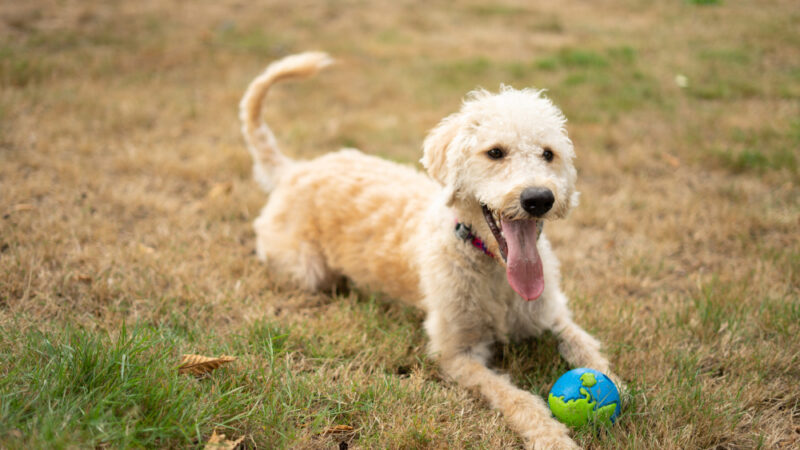
Top 4 Unique Facts About the Yellow Labradoodle
1. Not only are there multiple shades of yellow, but non-solid coats are acceptable within the Labradoodle standard.
This means that yellow colors can also be included in coats like parti and phantom.
2. Many breeders refer to yellow Labradoodles as golden Labradoodles.
While this can be an accurate representation of the coat color, it also may create confusion for some people between the golden Labradoodle and the Goldendoodle, which is a separate hybrid of a Poodle and Golden Retriever.
3. There are not any specific health conditions or concerns associated with the yellow coat color in Labradoodles.
4. The first successful Labradoodles produced by Wally Conron was sent to Hawaii.
These dogs were sent to a blind woman who was unable to have a guide dog due to her dog allergies. The low shedding level of the Labradoodle made these dogs a better fit to serve her than a Labrador Retriever would have been.
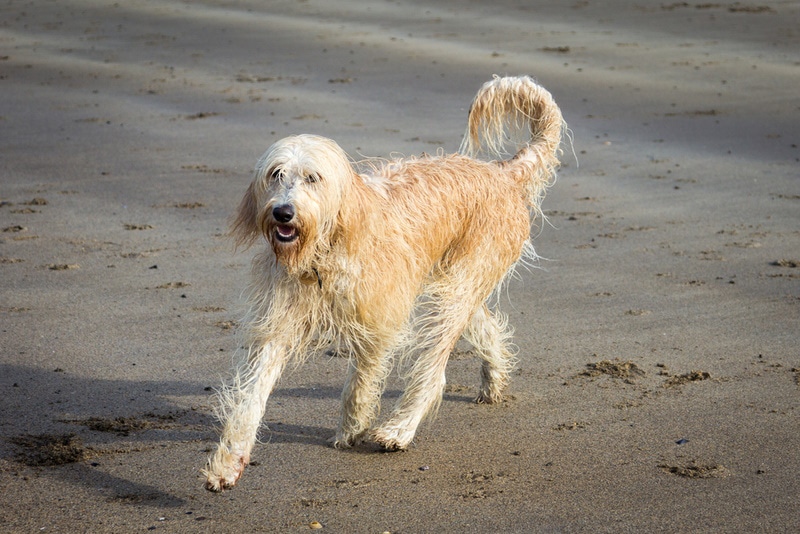
 Does a Yellow Labradoodle Make a Good Pet?
Does a Yellow Labradoodle Make a Good Pet?
Yellow Labradoodles are often considered to be great pets. They tend to have a desirable temperament, a highly social nature, and a high level of trainability. The Labradoodle can have a coat with complex care needs, though, which can make coat management difficult for some people to maintain. Considerations of coat care should be taken before deciding to bring home a Labradoodle.
It’s also important to seek out a breeder who performs appropriate health testing on dogs prior to breeding. Color breeding and backyard breeding have created a lineage of unhealthy dogs with unpredictable temperaments within the Labradoodle hybrid, and only responsible breeding will be able to turn this around.
Conclusion
The yellow Labradoodle is one of the most common Labradoodle varieties, and they can show up in multiple shades of yellow, as well as patterned coats. These dogs have no health or temperament issues specifically associated with their coat color, and they tend to be generally healthy dogs, as long as they come from a responsible breeder with healthy, health-tested breeding stock.
Labradoodles are a good option for people with mild allergies to dogs since they shed minimally. They are not truly hypoallergenic, though, since allergies to dogs come from dander, or skin cells. Low shedding can reduce the amount of dander in the home for people with allergies, making the Labradoodle a good option.
Featured Image Credit: Lopolo, Shutterstock


